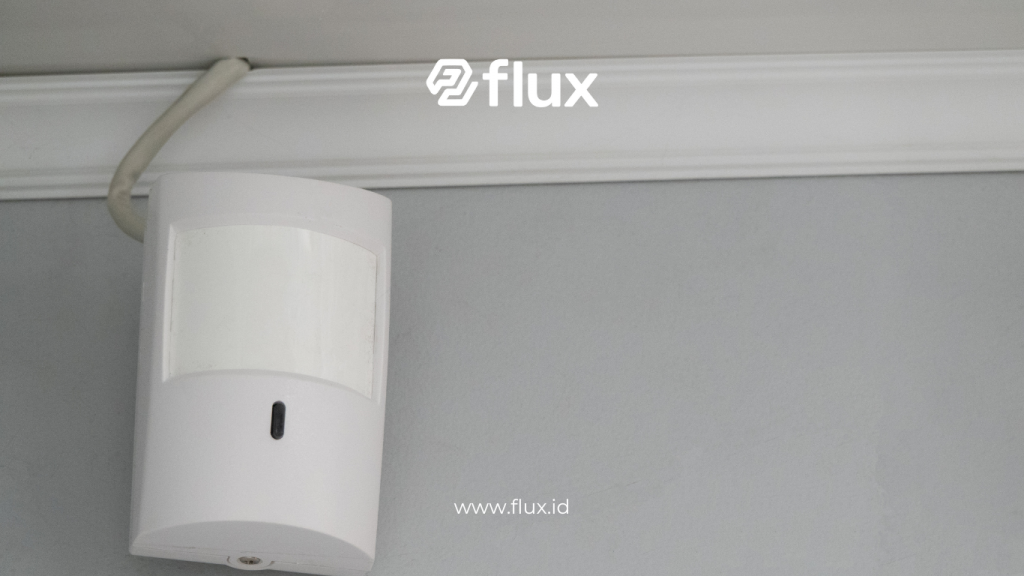Don't miss our holiday offer - 20% OFF!
Smart homes are one of the main trends in modern technology, with various smart devices designed to enhance comfort, security, and energy efficiency. One of the key devices that support smart homes is the Motion Sensor (PIR) or passive infrared motion sensor. In this article, we will delve into this technology, covering how it works and its benefits in optimizing smart homes.
Contents
What Is a Motion Sensor (PIR)?

Read More: What is a Motion Sensor (PIR) and How Does It Work? A Guide to Smart Security Systems
Definition of Motion Sensor (PIR)
A Motion Sensor (PIR) is a device designed to detect movement within a monitored area. PIR stands for Passive Infrared Sensor, which means this sensor detects infrared radiation emitted by objects, especially humans.
How Does a PIR Sensor Work?
A PIR sensor works by detecting changes in infrared radiation emitted by objects within its detection range. When a person or object moves in the monitored area, the temperature change caused by the heat radiation from a human body or other objects is converted into an electrical signal, which then triggers a response, such as turning on lights or activating an alarm.
Technology Behind PIR Motion Sensors

Read More: The Application of PIR (Passive Infrared Sensors) in Automation Systems: Benefits and Examples
Passive vs. Active Sensors
There are two main types of motion sensors: passive motion sensors and active motion sensors. PIR belongs to the passive category, meaning they do not emit energy to detect motion. Instead, PIR sensors respond only to changes in ambient temperature. This makes PIR more energy-efficient and less prone to interference.
Key Components of PIR Sensors
PIR sensors consist of several key components, such as:
- Fresnel Lens: Focuses infrared radiation onto the sensor element.
- Sensor Element: Typically composed of two parts that help detect changes in infrared radiation when an object moves.
- Temperature Compensation: The sensor can adjust to changes in environmental temperature to maintain accuracy in different weather conditions.
Range and Sensitivity
The range of PIR sensors can vary depending on the model, but they generally detect motion within a radius of 5 to 12 meters. Sensitivity can be adjusted to detect smaller movements or only larger ones.
The Role of Motion Sensor (PIR) in Smart Homes

Read More: The Benefits of Proximity Sensors in Everyday Life: From Smartphones to Smart Vehicles
Enhanced Security
One of the primary functions of PIR sensors is to improve home security. These sensors are often used in alarm systems to detect intruders. When the sensor detects movement inside or around the house, an alarm will sound, or an alert will be sent to the homeowner.
Automated Lighting
Motion sensors are also highly useful for automating lights. Lights will turn on when the sensor detects movement and turn off after some time when no movement is detected. This not only enhances convenience but also helps save energy.
Integration with Security Systems
PIR sensors are often integrated with smart security systems such as surveillance cameras and alarms. When the sensor detects motion, cameras can be activated to record the event, or alarms can sound to warn of potential threats.
Presence Detection for Energy Savings
In addition to automating lights, PIR sensors can be used to optimize the use of other household devices, such as smart thermostats or fans. By detecting the presence of occupants, these devices can automatically adjust settings to reduce energy consumption when no one is in the room.
Benefits of Using Motion Sensor (PIR) in Smart Homes

Read More: The Benefits of Proximity Sensors in Everyday Life: From Smartphones to Smart Vehicles
1. Energy Efficiency
PIR sensors help save energy by automatically turning off unused devices. For example, outdoor lights can automatically switch off when no motion is detected, significantly reducing electricity consumption.
2. Improved Home Security
With active motion sensors, your home is constantly monitored. A security system connected to PIR will notify you immediately when suspicious movements are detected in or around your home.
3. Convenient Automation
Automating lights and other devices provides incredible convenience. You no longer need to manually turn lights on or off when entering or leaving a room. This is especially useful at night when the PIR sensor can automatically turn on lights as you pass through a room.
4. Low Maintenance Costs
Since PIR sensors work passively, they generally have a long lifespan and require minimal maintenance. Additionally, many PIR sensors come with adjustable sensitivity settings to avoid false alarms.
5. Environmentally Friendly Technology
By reducing energy consumption and increasing efficiency, using PIR contributes to lowering a household’s carbon footprint, making it an eco-friendly choice for smart homes.
Challenges and Limitations of PIR Sensors
False Detection
One of the weaknesses of PIR sensors is the potential for false detection. The sensor may not always distinguish between human movements and pets or environmental changes, such as wind moving curtains. Therefore, proper sensitivity settings are crucial.
Limited Range
PIR sensors have a limited detection range, so for larger areas or homes with complex layouts, multiple sensors may be required to ensure full coverage.
Limitations in Extreme Temperatures
In extremely hot or cold conditions, PIR sensors may not function optimally, especially if the temperature difference between the moving object and the environment is not significant enough to be detected.
How to Choose a Motion Sensor (PIR) for Your Smart Home
Consider Detection Range
Before purchasing a PIR sensor, consider its detection range. Make sure the sensor can cover the area you want to monitor, both indoors and outdoors.
Compatibility with Smart Home Systems
Ensure that the sensor you choose is compatible with the smart home system you use, such as Google Home, Amazon Alexa, or Apple HomeKit.
Additional Features
Some PIR sensors come with additional features, such as the ability to detect light levels or temperature. These features can enhance the functionality of the sensor in your smart home.
Conclusion
Integrating Motion Sensor (PIR) into a smart home system offers numerous benefits, including enhanced security, energy savings, and more convenient automation. These sensors allow homes to become smarter and more energy-efficient while providing extra protection against external threats. Although they have some limitations, this technology is continually evolving, making it a vital component in the future of smart homes.
By selecting the right PIR sensor and setting it up properly, you can experience a significant improvement in the quality of life in your smart home.





